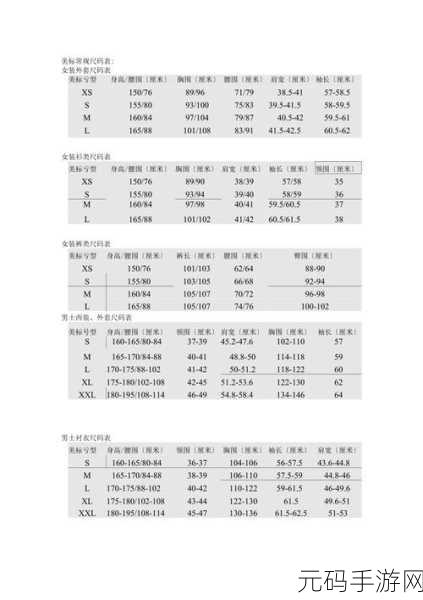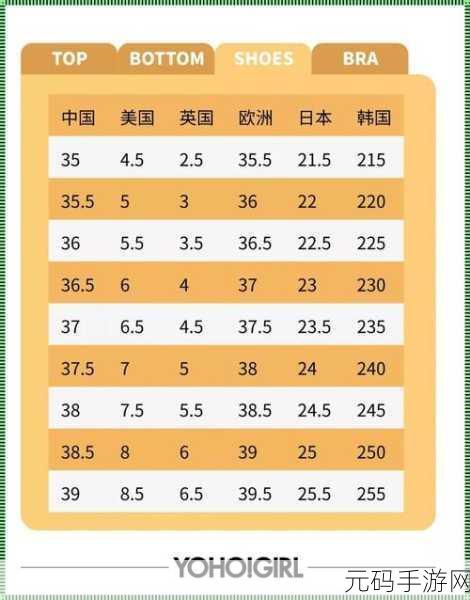了解亚洲尺码与欧洲尺码的转换
在选购服装时,合适的尺寸是每位顾客关注的重要因素。不同地区对尺码的定义存在差异,这使得跨国购物变得复杂。特别是在亚洲和欧洲之间,消费者常常感到困惑。因此,对这两种主要尺码系统进行深入理解显得尤为重要。
亚洲尺码概述
亚洲市场普遍使用的一套标准,是基于身高、体重等因素来划分衣物大小。这一系统通常以数字表示,例如160、170等,其中包含了中国、日本及韩国等国家。当我们提到“160”这个数字时,往往意味着一个人的身高大约为160厘米。而对应的穿衣习惯也因文化背景而有所不同,因此即使身材相似,不同的人在选择服饰时可能会有独特需求。

欧洲尺码体系分析
相比之下,欧洲则采用了一套更为统一且国际化的测量标准,其标识形式多样,包括法国(FR)、德国(DE)以及意大利(IT)的浅层分类。这些国家在设计上更注重细节,为满足各种身体形态提供了更多选择。例如,从36号至54号不等,每个号码代表着精确的数据,让消费者能根据自己的具体条件找到最符合自己体型和个人风格的款式。
如何将亚洲尺码转换成欧洲尺码
1. 身体数据收集:

The first step involves measuring your body dimensions, such as height, bust circumference, waist size, and hip measurement. Collecting accurate data will facilitate the conversion process.
2. 参考转换表:
Your best bet for converting sizes is to refer to a reliable Asian-European size conversion chart available online or in-store where international brands are sold. This table typically lists both Asia and European sizes side by side for easy reference.
举例说明:
- A typical Asian medium (M) often corresponds to an EU small (S).
- If you wear an Asian large (L), it may align with a European medium (M).
- This means that if you're used to wearing a specific size in one region but want something from another area, always double-check against these guidelines before making a purchase.
Pitfalls of Size Conversion: What Not to Miss?
Error can occur when relying solely on numeric conversions without considering brand-specific sizing nuances. Each clothing manufacturer might have slightly different interpretations of what constitutes “large” or “medium.” Therefore,当尝试购买来自新品牌或新的商店产品时,总要参考该品牌发布的信息并查阅评论,以获取有关其真实尺寸表现的小贴士。此外,有必要考虑面料伸缩性,因为某些材料比其他材料更加宽松或紧绷。在决定之前,多数情况下亲自试穿总是最佳方案。
E-commerce购物中的注意事项
The rise of e-commerce platforms让人们可以轻松地从全球各地订购商品。然而,由于缺乏实际体验,在网上买衣服尤其具有挑战性。有时候,即便依据明确转化工具进行计算,也不能保证所收到的不一定符合预期。因此,可以通过查看用户反馈和评分来判断该商品是否如描述般准确。一旦你建立起信任关系后,再继续探索未曾尝试过的新潮流或者外观就简单很多了。
热门话题推荐:
- An overview of global women's fashion trends impacting local markets;
- Tips for navigating international shipping while shopping abroad;
- Cultural influences on fashion choices across continents;



